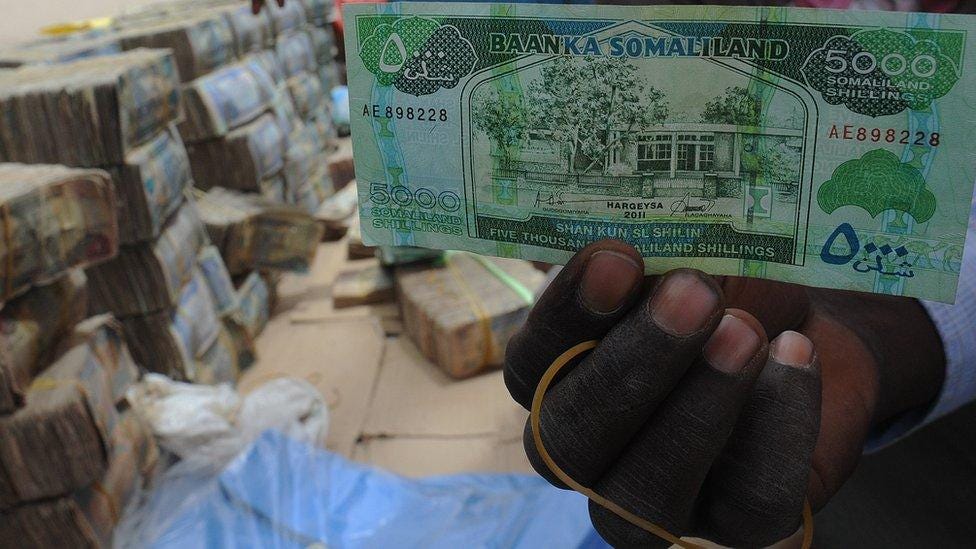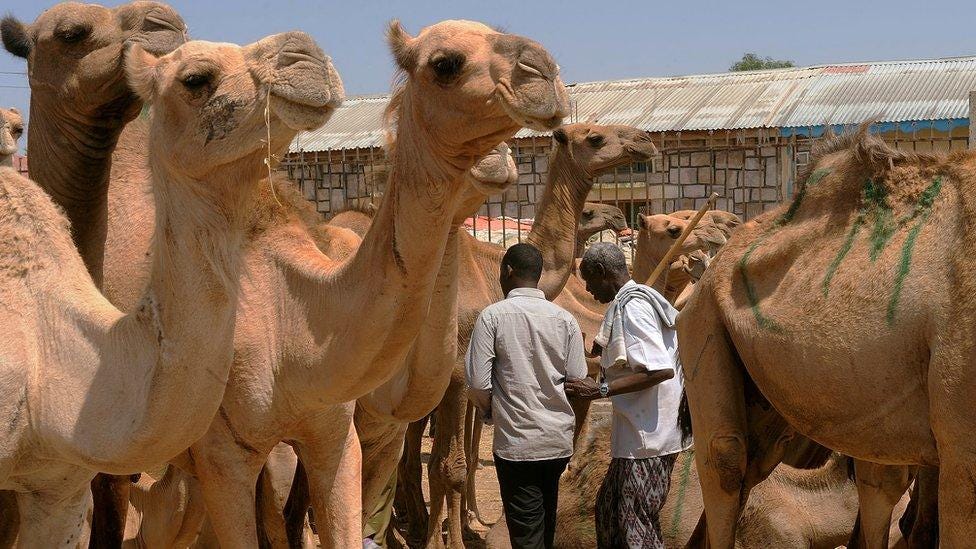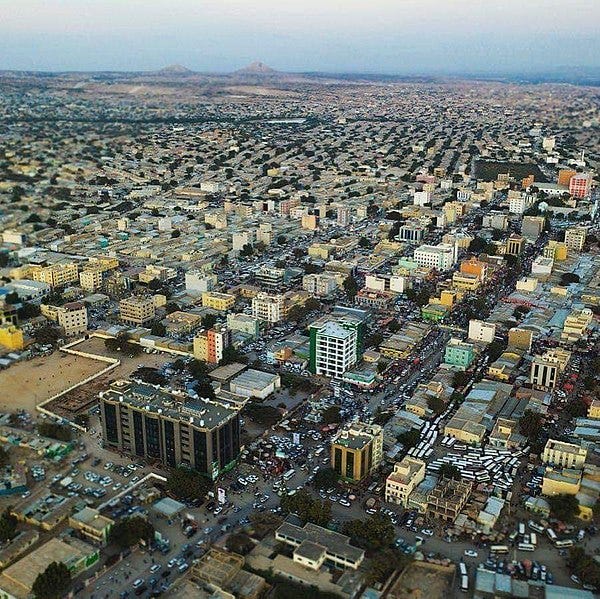Somaliland profile
A breakaway, semi-desert territory on the coast of the Gulf of Aden, Somaliland declared independence after the overthrow of Somali military dictator Siad Barre in 1991.
A breakaway, semi-desert territory on the coast of the Gulf of Aden, Somaliland declared independence after the overthrow of Somali military dictator Siad Barre in 1991.
The move followed a secessionist struggle during which Siad Barre's forces pursued rebel guerrillas in the territory. Tens of thousands of people were killed and towns were flattened.
Though not internationally recognised, Somaliland has a working political system, government institutions, a police force and its own currency.
The former British protectorate has also escaped much of the chaos and violence that plague Somalia.
SOMALILAND: FACTS
Capital: Hargeisa
Area: 177,000 sq km
Population: 5.7 million
Languages: Somali, Arabic, English
Life expectancy: 50 years
LEADER
President: Muse Bihi Abdi
Muse Bihi Abdi was elected president in November 2017, succeeding Ahmed Silanyo.
Mr Bihi has served as chairman of the ruling Kulmiye party since its founder and leader, Silanyo, was elected president in 2010.
A retired air force pilot, Bihi's only previous government post was as interior minister of Somaliland in the 1990s.
President Bihi's first term in office was due to end in November 2022 but lawmakers extended it by two years after the electoral commission called for a delay in due to financial and technical constraints.
The opposition Waddani and UCID parties have said they no longer recognise him as president. Protests and tensions over the president's term threatens to undermine relative stability in Somaliland,
MEDIA
Satellite television is a popular alternative to government-owned SLNTV
Government mouthpiece Radio Hargeisa is the only permitted domestic radio outlet. Private TV stations operate alongside a government-run network.
The authorities target journalists and media outlets that cover sensitive topics, including territorial disputes with neighbouring Puntland.
TIMELINE
Image caption,
Somaliland issues its own money - the Somaliland shilling
7th Century - Islam starts to make inroads into the area of modern-day Somaliland.
14th Century - The area's Islamic sultanates come under the suzerainty of the Christian Ethiopian Empire.
1527 - Sultanate of Adal revolts against Ethiopian rule and subsequently conquers much of Ethiopia, before being defeated with the help of the Portuguese in 1543.
1888 - Britain establishes the protectorate of British Somaliland though treaties with the local sultanates.
1899 - Islamic cleric Mohammed Abdullah rises against British rule, going on to establish the Dervish State, which survives until it is destroyed by British forces in 1920.
1960 - British Somaliland and Italian Somaliland become independent and merge to form the Somali Republic.
1991 - The former British Somaliland declares unilateral independence as Somaliland following the ousting of Somali President Mohamed Siad Barre, which plunges the rest of Somalia into anarchy.
2001 - More than 97% of the population votes to endorse the constitution adopted in 1997, in a referendum aimed at affirming Somaliland's self-declared independence.
2016 - Somaliland celebrates 25 years of self-declared independence, but remains unrecognised.
2024 - Ethiopia and Somaliland sign a memorandum of understanding for landlocked Ethiopia to use one of Somaliland's ports. Somalia describes the agreement as an act of "aggression".
Image caption,
Livestock exports are an important source of revenue
The BBC
Overview
Somaliland's economy heavily relies on primary production, particularly livestock and agriculture, with livestock exports being a major source of income. The economy is also influenced by remittances from Somalilanders working abroad, and its location in the Gulf of Aden has attracted investment in port development and infrastructure. While the private sector plays a significant role, the government's direct involvement is limited.
Here's a more detailed look at the economy:
Key Features:
Livestock and Agriculture:
Somaliland's economy is heavily dependent on livestock, particularly camels, sheep, and goats, which are exported to neighboring countries and Gulf states. Agriculture, including fruit and vegetable production, also contributes significantly.
Remittances:
A substantial portion of Somaliland's GDP comes from remittances sent by Somalilanders working abroad, highlighting the importance of the diaspora.
Port Development:
Somaliland's location on the Gulf of Aden has led to significant investment in port development, with the Berbera Port receiving investment from DP World and the UK government's CDC.
Private Sector:
The Somaliland economy is largely driven by the private sector, with government involvement being relatively limited.
Infrastructure Development:
Infrastructure development, particularly roads and energy, is a key area of focus for attracting foreign investment and promoting economic growth.
Mineral Resources:
Somaliland possesses significant mineral resources, including gypsum, and has potential for mining and quarrying.
Trade:
Somaliland engages in both exports and imports, with its open economy reflected in a high ratio of imports and exports to GDP.
Challenges and Opportunities:
Vulnerability to External Shocks:
The reliance on livestock and agriculture makes Somaliland vulnerable to changes in global commodity prices, droughts, and other external factors.
Climate Change:
Climate change impacts agricultural production and livestock, posing a challenge to the economy.
COVID-19:
The COVID-19 pandemic affected trade flows and reduced demand for agricultural products.
Investment Opportunities:
There are opportunities for investment in various sectors, including light manufacturing, the service sector, and infrastructure.
Youth Unemployment:
High unemployment, particularly among youth, is a concern, with some educated individuals migrating in search of opportunities.
Economy of Somaliland
Article Talk
The economy of Somaliland largely relies on primary production and agriculture, where livestock is the main export of the country, which it ships to neighbouring Djibouti and Ethiopia, as well as to Gulf states, such as UAE, Saudi Arabia and Oman. Somaliland has a GDP of $11,583,000,000, and a GDP per capita of $1361 as of 2024, The COVID-19 pandemic has restricted Somaliland's trade flows with decreased demand in the agriculture sector, a significant source of tax revenue.
Economy of
Somaliland
Hargesia Central Metropolis
Currency
Somaliland shilling (SLS)
Fixed exchange rates
SLS 10.000 = $1
Country group
Developing/Emerging
Middle-Income Country
Industrializing Country
Statistics
Population
Increase 6,250,000
GDP
$11,583,000,000 (2025)
GDP per capita
$1561 (2024)
Source: Wikipedia








